Murder by Numbers is not Phoenix Wright. This is something I’ve had to hammer into my brain repeatedly over the past week, and yet I still keep coming up with comparisons. But it’s not. It is not Phoenix Wright, and comparing it to that venerable series does it an injustice.
Glancing at any screenshot or synopsis, you can see plenty of parallels. A character and quirky sidekick investigate murders, gather evidence, and try to figure out whodunnit. The world is a lavish and beautiful cartoon, with a cast of characters that are almost all exaggerated oddballs with punny names. Murder by Numbers evokes Capcom’s pointy-haired lawyer regularly (and occasionally deliberately), but it really doesn’t play like a part of that series.
Murder by Numbers is not Phoenix Wright
It is, however, something I’ve been interested in every since it was announced. See, it looks a bit like Phoenix Wright, but the puzzles are Picross-style nonograms. That is to say — you get a blank grid, and you fill in squares on that grid according to numbers along the sides to make a picture. Considering I’ve bought systems for Picross games, Murder by Numbers‘ combination of these two series made it seem like it was laser-targeted directly at me.
Additionally, the jazzy, upbeat music is composed by Masakazu Sugimori of Phoenix Wright fame, while the colorful cast was designed by Hatoful Boyfriend‘s Hato Moa. The pedigree alone is enough to make me salivate. Throw in some ’90s flavor and it’s no surprise that the aesthetics and dialogue are pretty much pitch-perfect.
Our protagonist, Honor Mizrahi, lives in Los Angeles in the mid-’90s, and she’s having a bit of a bad time. She’s just finished up a very messy divorce, the detective show she acts in has just fired her, the person who fired her has been murdered, and she’s the prime suspect. Luckily, a chance encounter with an amnesiac floating robot (just go with it) gives her the support and means she needs to prove her innocence, and a potential new investigator is born.
SCOUTing ahead
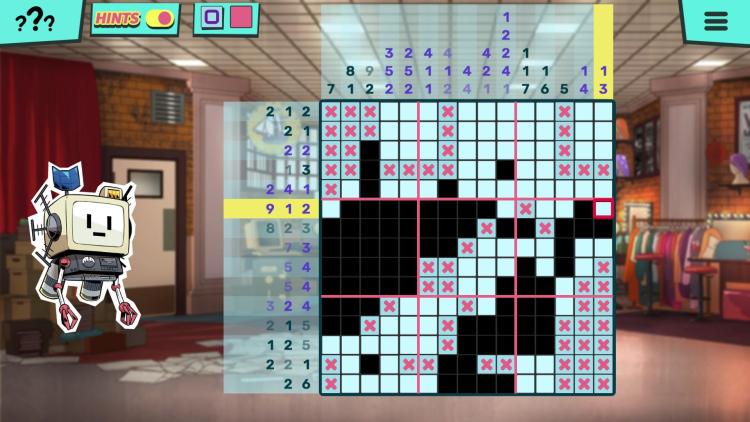
I know how complicated this looks, but once you have the basics down, it’s simple and soothing to fill these in.
The aforementioned robot, SCOUT, is an utter delight and is pretty much the heart of the game. With corrupted databanks and no memory of anything before waking up on the trash heap, SCOUT learns all about human behavior throughout the four cases that make up Murder by Numbers. This provides ample time to muse on the things people do and the reasons they do it, and how human life and interactions can actually be pretty complex things.
SCOUT is also the reason why we’re solving nonogram puzzles. His sensors let him scan for useful objects and evidence, and the nonograms are used to determine what those items are. This makes a good amount of sense when investigating a crime scene, although it’s a bit of a stretch when Honor is handed a business card and you need to solve a puzzle to determine that, yes, it’s a business card.
That said, there isn’t actually too much focus on your figuring stuff out. Really, this is a quirky visual novel broken up with nonogram puzzles. You’re never going to get stuck thinking about what evidence to present to somebody or what questions to ask, and there are no punishments for getting these things wrong. You pretty much solve the Picross puzzles and then go through the next load of lovely dialogue (with some minor choices and freedom to wander) until the next one.
A minor blotch
This also leads to one of Murder by Numbers‘ few pitfalls, which is that there aren’t really any “a-ha!” moments. If you’ve played anything like this before, you’ll likely figure out whodunnit – not to mention the why and how – pretty quickly. Long before Honor, at least, who has a somewhat annoying habit of finding a single piece of evidence and then rushing off to get the wrong person arrested, before discovering it wasn’t them. The cases themselves aren’t particularly tricky or convoluted, so there’s not too much mystery in these murder mysteries. And I can’t believe I’m saying that about a game where one murder weapon is a pride float shaped like a giant shoe.
The other potential problem is one of pacing — but that might be a personal thing, and it means the easy-to-remember plots may be a positive. If you’re like me, then you’ll prefer to solve nonograms in small bunches and then go and do something else for a bit. Murder by Numbers often throws a set of three or four at you before you get your next load of exploration and banter. That’s not ideal to my mind, but the simpler plots mean you’re pretty safe to put down the game whenever. You can come back to it later without worrying about having forgotten crucial details about the investigation.
Happy little accidents
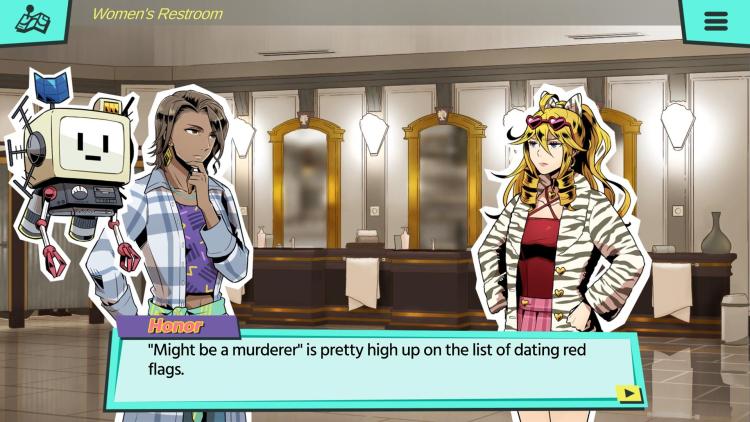
The white cut-outs around characters to help them pop out from the background is an inspired designed choice.
While I gripe a little about the mysteries themselves, those gripes don’t extend to the characters or dialogue. Murder by Numbers keeps a light-hearted tone throughout, but it delves into some weightier topics. The utterly toxic relationship Honor had with her ex-husband is a recurring theme, and the third case centers around a drag club, so a bunch of LGBT+ issues are brought up. It’s a testament to the writing that these are deftly handled (barring a mild overuse of clichés) and there’s no preaching, nor does the game’s tone suddenly drop into darker areas. Still, anyone who relates to those issues should take heed.
There are a fair few nonogram puzzlers out there, so I’m delighted to say that Murder by Numbers does it better than pretty much anything that doesn’t have Picross in the title. Solid tutorials do an excellent job introducing you to the gratifying satisfaction of correctly filling in little squares on a grid, and there are a variety of hint systems in case you get really stuck. Beating the puzzles without using these systems will also unlock further puzzles to be tackled at your leisure on the main menu, and completing those unlocks some little bonus scenes from SCOUT’s memories. I do long for an option to let you experiment with filling in particular squares and their surroundings and then either keeping these or erasing everything you’ve done if it doesn’t work out, but the nonograms here aren’t complex enough for it to be required.
Honestly, your tolerance for Murder by Numbers is going to come down to how much you like nonograms. Despite the Phoenix Wright stylistics, the jazzy soundtrack, the solid writing, and the vibrant characters and art, this is a nonogram game with a story. A visual novel broken up with Picross segments, if you like. I’d love for there to be more complex stories and more of a focus on investigation, but that’s not much of a downside at all. If you’ve never touched a nonogram before, then this is an excellent way to start, and considering the number of casual Picross addicts I know, I’d say it’s easily worth a shot at this gimme of a price.

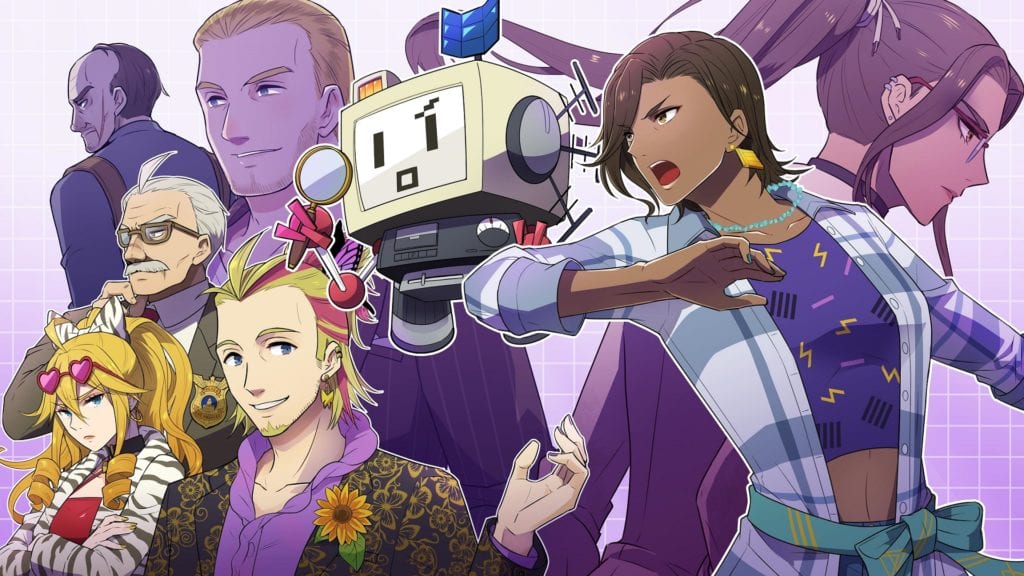

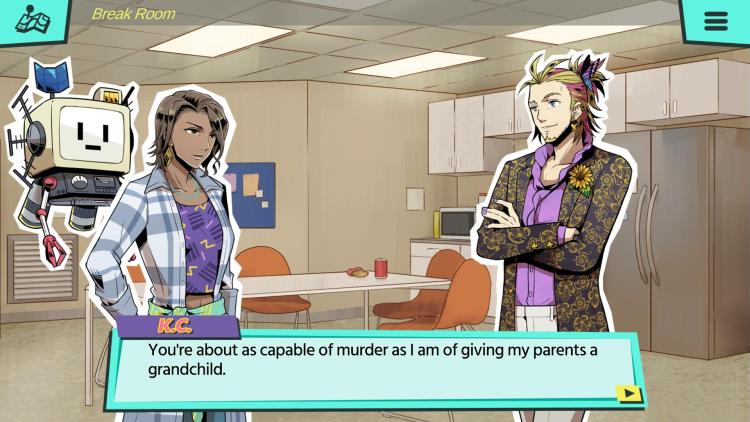
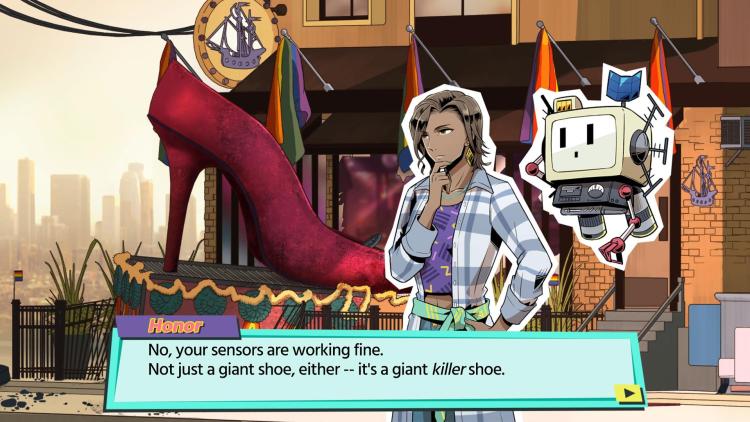
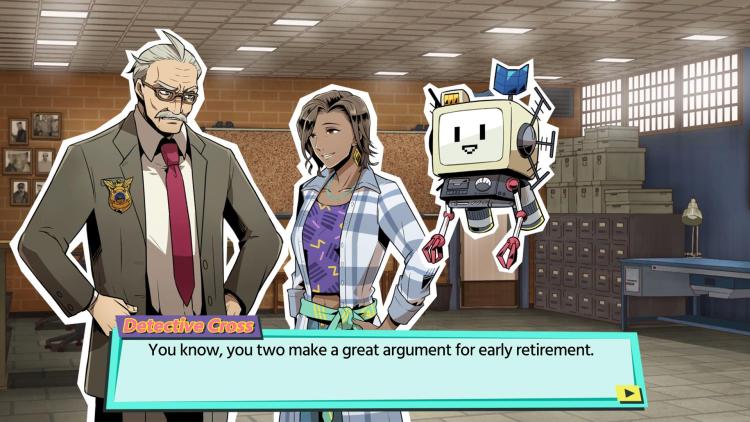





Published: Mar 6, 2020 1:30 PM UTC